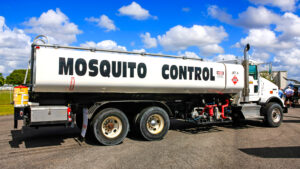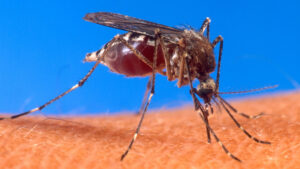By Rajiv Chowdhury, Florida International University

The Centers for Disease Control and Prevention reported on June 26 that five cases of locally transmitted malaria had been identified – four in Florida and one in Texas – since May. These are the first cases of locally acquired mosquito-borne malaria in the U.S. since 2003.
The Conversation spoke with Dr. Rajiv Chowdhury, a global health expert from Florida International University, about the significance of these cases and why they’re appearing now.
1. What is malaria and how did these people become infected?
Malaria is a serious and sometimes life-threatening disease caused by the bite of a female mosquito from the genus Anopheles, the vector that transmits malaria.
The most common symptoms are fever, chills, headaches, muscle aches and fatigue. These symptoms typically occur from 10 to 15 days after people are infected with the parasite. However, if untreated, more severe symptoms may appear that include impaired consciousness, difficulty breathing, convulsions, abnormal bleeding and more, which can ultimately lead to death.
The five cases in Florida and Texas were caused by the Plasmodium vivax parasite, which is the most common malaria-causing parasite strain outside of the African continent. All are believed to be locally acquired, which means they were not connected to any international travel. In addition, there is no evidence to suggest that the cases in the two states are related. Plasmodium vivax is the most globally widespread of all Plasmodium strains and can cause severe, often fatal, infections.
All five patients have reportedly recovered, and surveillance for additional cases is ongoing.
2. Why might these cases be surfacing now?
There could be several factors driving the emergence of locally acquired malaria.
For one, climate change is causing a shift in weather patterns, some of which can worsen malaria conditions. A higher average surface temperature from global warming could lead to higher mosquito migration in areas that were previously uninhabitable by Anopheles mosquitoes.
These higher temperatures could also enhance the growth rate and transmissibility of the parasites responsible for malaria. These include Plasmodium parasite variants such as vivax, knowlesi and falciparum.

The effects of climate change can also lead to higher rainfall and sea-level rise in many places – both of which can result in more areas or open spaces with stagnant water that typically serve as effective breeding grounds for mosquitoes.
Given these changes in local conditions, more cases could occur in populations that were previously “immunologically naïve” to malaria. In other words, since these people have never been exposed to it, their immune systems are ill-equipped to fight it.
Furthermore, when people travel to countries or areas where climate-driven malaria cases are on the rise, there is a greater possibility of bringing those infections back to the U.S., where local mosquitoes could be exposed to the parasite in an infected person’s blood.
Lastly, due to misuse and overuse of common antimalarial medications, such as artemisinin, antimicrobial resistance has become a major problem in many regions of the world. This drives up the number of drug-resistant cases, the severity of the illness and the possibility of larger outbreaks.
This is further complicated by emerging resistance to insecticides among Anopheles mosquitoes.
3. How can people help prevent malaria transmission?
The CDC and the Florida Department of Health are urging people to protect themselves by using bug spray, avoiding areas where mosquitoes congregate and covering exposed skin.
Precautions also include what’s known as “drain and cover” – in other words, draining standing water to prevent mosquitoes from multiplying and using screens to prevent mosquitoes from entering through doors and windows. Health departments also note that it’s important to drain or discard containers that can collect rainwater, such as flower pots, old tires and buckets.
4. What are the available malaria treatments?
There are several medicines used to prevent and treat malaria. The choice of medication typically depends on the type of malaria, whether a malaria parasite is resistant to a medicine, the weight or age of the person infected with malaria and whether the person is pregnant.
Most malaria medicines are taken in pill form. The most common include combination therapy medicines that include a class of semi-synthetic drugs called artemisinins. These kill malaria parasites by damaging their proteins and are usually the most effective treatment against malaria. Chloroquine phosphate, a medicine that has been used for decades to prevent and treat malaria, is now recommended for treatment of infection with Plasmodium vivax, but only in places where the parasite is still sensitive to this medicine. Lastly, there’s primaquine, a class of antimalarial drugs typically added to complement another treatment to prevent any relapse of infection.
5. Are vaccines against malaria available?
Nearly half of the global population is currently at risk of malaria, with almost 250 million cases and 620,000 deaths worldwide, mostly affecting children. Therefore, in October 2021, the World Health Organization began recommending the widespread use of a malaria vaccine known as RTS,S/ASOI for children who live in moderate- to high-risk areas.
This is the first-ever vaccine for a human parasitic infection. Trials show that the vaccine can significantly reduce malaria, including severe malaria, among young children.
A group of scientists from the U.K. reported a modified version of this vaccine, called R21, in September 2022. The early-phase clinical trial reported that the new vaccine is 80% effective at preventing disease in young children. However, real-world trials for this new candidate vaccine are still ongoing.
Other vaccine candidates are currently being developed by BioNTech, the company behind the Pfizer/BioNTech mRNA COVID-19 vaccine, and through joint efforts between Novavax and the Bill & Melinda Gates Medical Research Institute.
While new malaria vaccines will be a major boost for curbing malaria worldwide, it will be critical for health departments to continue emphasizing other preventive strategies, especially in newly affected areas like Florida and Texas.![]()
Rajiv Chowdhury is a professor of global health at Florida International University.
This article is republished from The Conversation under a Creative Commons license. Read the original article.
Sign up for The Invading Sea newsletter by visiting here.



